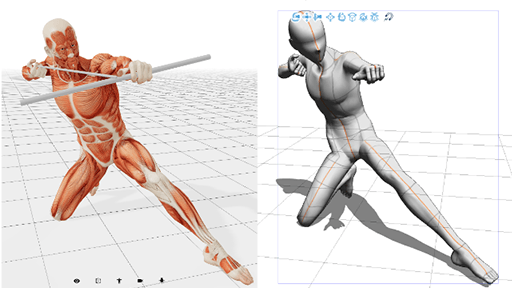Dive into Pixel Art
Intro
Well hello there! This is Tamil and I wanted to share some tips on how to get started. Monitors in the 80's had small resolutions, so people had to draw each pixel to make it work. Today pixel art is mostly used for indie game development because it is an easy way to get started with sprites.
I will go over tools and set up for Clip Studio Paint, but I will not focus on game development art. I also created a playlist on youtube for other pixel art tutorials that go into more depth. A Pinterest board I made helped me paint as well. I hope you learn something new and check out my video for more info.
Set up Canvas
First of all, you need to set up a small canvas size. Pixel art looks better on smaller resolutions, but it depends on the type of artwork you are creating. I will be creating a landscape, so I will start with around 150 by 150. I could scale it up at any moment later.
If you are going to make a propr or a character it is best to scale to even 64 or 32. There is a video on my playlist that talks more about resolutions.
After you have your canvas set up, we need to create a pixel grid for better a better view.
In the view section, you can find these. View -> Grid will show or hide the grid for the canvas. View->Grid/Ruler Bar Settings will help you adjust the grid itself. By default, it is not set up for pixel art.
in Grid Settings, change everything to 1. This will create a grid that will work for pixel art. Here is the result.
It is probably hard to see the actual grid on the right because it is so small, but that if you zoom in you could see the perfect pixel rulers.
Tools Set Up
For tools, you need to keep just a few things in mind. The transform tool is made for big images and it is meant to smooth pixels. We need to change the algorithm for it. It is super easy to do.
Grab a layer -> Ctrl+T -> Tool Property -> Interpolation Method -> Hard Edges (Nearest Neighboor)
This will result in crisp edges when transforming. This is the difference.
The second one is hard edges and the first is smooth edges. Pixel art works best with Hard Edges.
You will also need to change Anti-Aliasing for any tool you will be using: brush, selection, fill. Anti-aliasing is just a method for smoothing edges when adding or selecting pixels.
For brushes, you need to go into settings and go into Anti-Aliasing. Just pick settings that are on the left.
Do not forget to do the same for the selection tool as well or any other tool that has that function.
An easy brush to get started for me was Fill-in-mono-pen from default brushes. I adjusted some settings and it worked pretty well for line art.
I also found this amazing pack on Clip Studio that has a lot of great pixel brushes.
Quick tips!
1) Pixel art has jaggies and doubles. Essentially, when making a line you want it to be consistent and looking cleaner, which might take some time to get used to.
You can watch the playlist I created for more in-depth examples. Because I will be working in bigger sizes, this is not as important to my work.
2) There are different ways to shade. Creating dots in different patterns could be a great way to introduce some texture!
3) Use limited color palette and gradient maps. Pixel art looks best when there is less color variation. If there is too much of it, it might feel very busy. Because there is very little variation, you can also work with gradient maps. Each value has its own color, so it is easy to assign them as you go.
Using 3-4 colors for a start is very good. You can add more as you go later!
4) Clip Studio Paint has a cool filter to make line art pixelation easier.
Select the layer you want to use for line art
Switch to monochrome
Filter ->Correct Line -> Adjust line width
Use depending on the line art. It is hard to do optimal settings because it depends on the style and art you going for.
5) Do not forget to export in PNG format if the platform allows it. JPEG will create small artifacts on the image.
Outro
I hope you learned something. Check out the video for a timelapse of the painting and some more info about functions.
Let me know in the comments if you have any questions and I hope you learned something. Happy painting.
My social media links and more:
























コメント